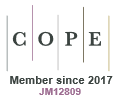Just Accepted
This article has been peer reviewed and accepted for publication. It is in production and has not been edited, so may differ from the final published form.
Chum dine with me: assessing the effects of wildlife tourism on non-target fish assemblages
Abstract
Context: Wildlife tourism is becoming increasingly popular and often uses bait and berley to attract the target species and enhance customer experience. However, few studies have assessed the effects of food-based attractants on non-target species. Understanding the impacts of provisioning on the marine ecosystem, including non-target species, is required to conduct a comprehensive assessment of wildlife tourism activities. Aims: We compared fish assemblages at the Neptune Islands Group to other offshore islands to assess whether any detectable differences could be observed and attributed to cage-diving operations. Methods: Baited Remote Underwater Video Stations (BRUVS) were used to quantify and compare fish assemblages across a six-year timespan at the tourism site Neptunes Islands Group (South Australia) and six reference locations. The Neptunes Islands Group consist of one high provisioning site where a majority (90 %) of the bait and berley input takes place and one lower provisioning site where operators visit less frequently. Key results: Fish assemblages at the Neptunes Islands Group and all other offshore islands had equivalent levels of variability. There was a higher total abundance of fish at both sites at the Neptune Islands Group compared to reference sites, driven by higher abundances of horseshoe leatherjacket Meuschenia hippocrepis and barber perch Caesioperca rasor. There were, however, no detectable difference in species richness or evenness between the Neptunes Islands Group and other offshore islands or for the other two species assessed individually. Conclusion and implications: Despite operators using food-based attractant on a near daily basis and fishes feeding on bait and berley continuously, the cage-diving industry has minimal effects on observed demersal fish abundance and diversity. This suggests that the current level of provisioning has limited ecological impacts on the reef fish community and highlights that the management regulations are currently suitable for non-target fish assemblages.
WR24211 Accepted 21 May 2025
© CSIRO 2025



